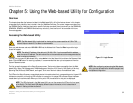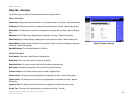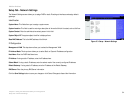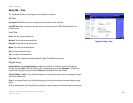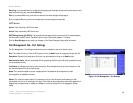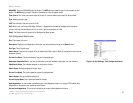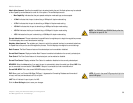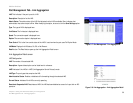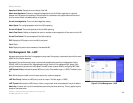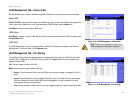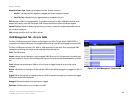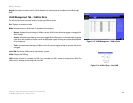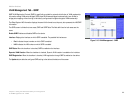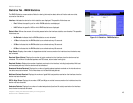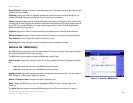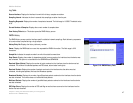
40
Chapter 5: Using the Web-based Utility for Configuration
Port Management Tab - LACP
WebView Switches
Operational Status. Displays the current status of the LAG.
Admin Auto Negotiation. Enables or disables Auto Negotiation on the LAG. Auto-negotiation is a protocol
between two link partners that enables a LAG to advertise its transmission rate, duplex mode and flow control
(the flow control default is disabled) abilities to its partner.
Current Auto Negotiation. The current Auto Negotiation setting.
Admin Speed. The configured speed at which the LAG is operating.
Current LAG Speed. The current speed at which the LAG is operating.
Admin Flow Control. Enables or disables flow control or enables the auto negotiation of flow control on the LAG.
Current Flow Control. The user-designated Flow Control setting.
PVE. Displays the PVE group to which the LAG is configured.
Select Ports
Ports. Displays the ports that are members of the selected LAG.
Port Management Tab - LACP
Aggregate ports can be linked into link-aggregation port groups. Each group is comprised of ports with the same
speed, set to full-duplex operation.
Aggregated Links can be manually setup or automatically established by enabling Link Aggregation Control
Protocol (LACP) on the relevant links. Aggregate ports can be linked into link-aggregation port-groups. Each
group is comprised of ports with the same speed. The LACP screen contains fields for configuring LACP LAGs.
LACP System Priority. Indicates the global LACP priority value. The possible range is 1- 65535. The default value
is 1.
Port. Defines the port number to which timeout and priority values are assigned.
LACP Port Priority. Defines the LACP priority value for the port. The field range is 1-65535.
LACP Timeout. Administrative LACP timeout. A short or long timeout value can be selected. Long is the default.
Admin Key. A channel will only be formed between ports having the same admin key. This only applies to ports
located on the same switch.
Figure 5-9: Port Management - LACP



